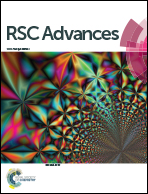Strategies for anti-icing: low surface energy or liquid-infused?
Abstract
Anti-icing is of great importance in society since icing on facility surfaces may bring about serious disasters and economical losses in fields such as aerospace, transportation and electrical communication. Development of polymeric coatings with excellent anti-icing behaviours has been one of the practical topics in recent years. Control of the chemical compositions and topological surface structures is vital to anti-icing coatings. In this review, we summarize the recent progresses on polymeric anti-icing coatings prepared from low surface energy, hydrophilic or amphiphilic polymers. Surface characteristics of the anti-icing coatings including morphology, wettability and ice adhesion strength are discussed. Comparisons between representative studies, including low surface energy coatings and liquid-infused slippery surfaces will be highlighted, with emphasis on the polymer substrate properties and innovative aspects. This review is aimed at giving a brief and crucial overview of the strategies for preparation of icephobic coatings and fulfillment of the anti-icing behaviours.


 Please wait while we load your content...
Please wait while we load your content...